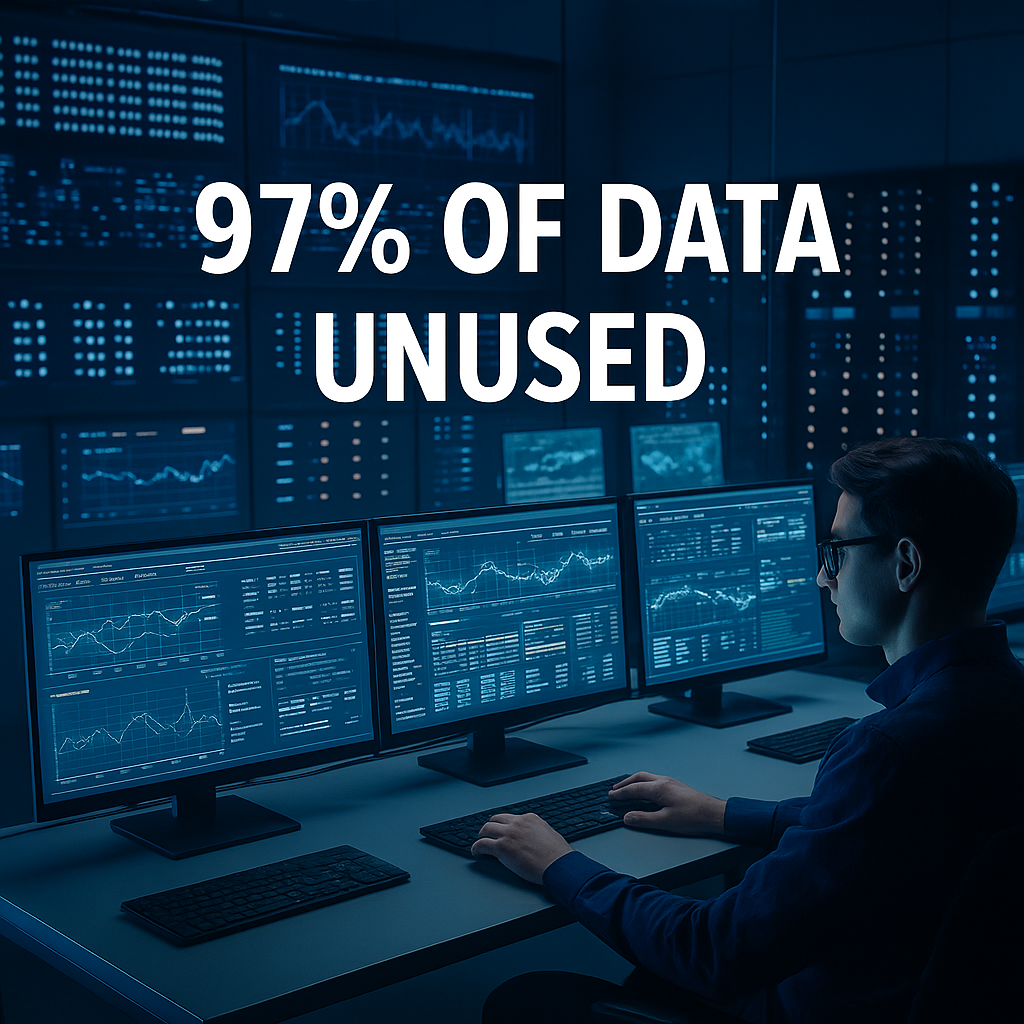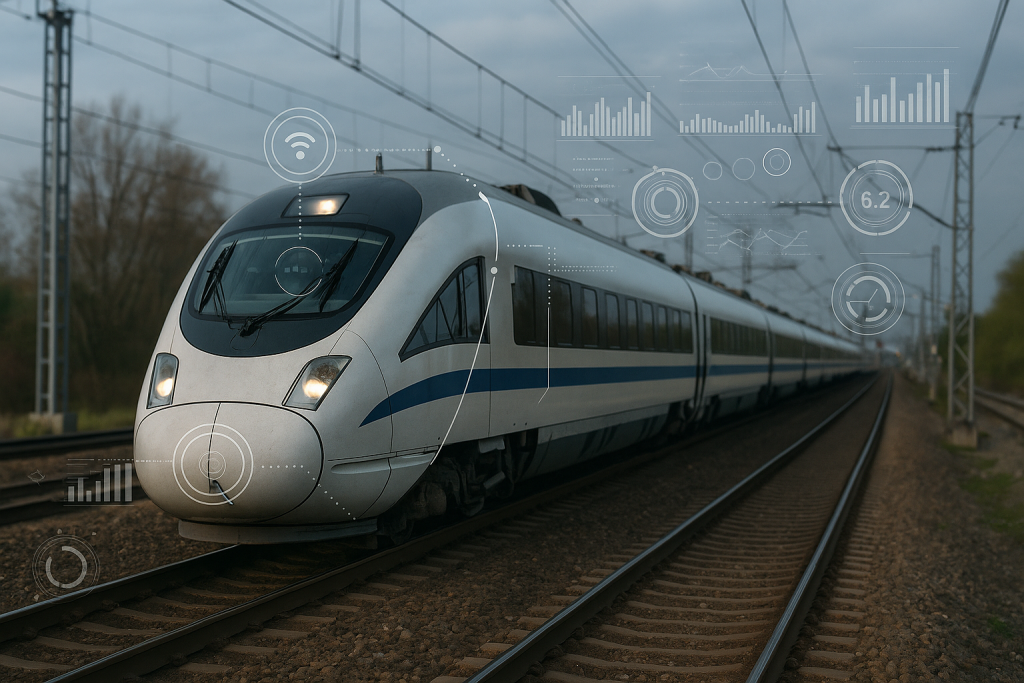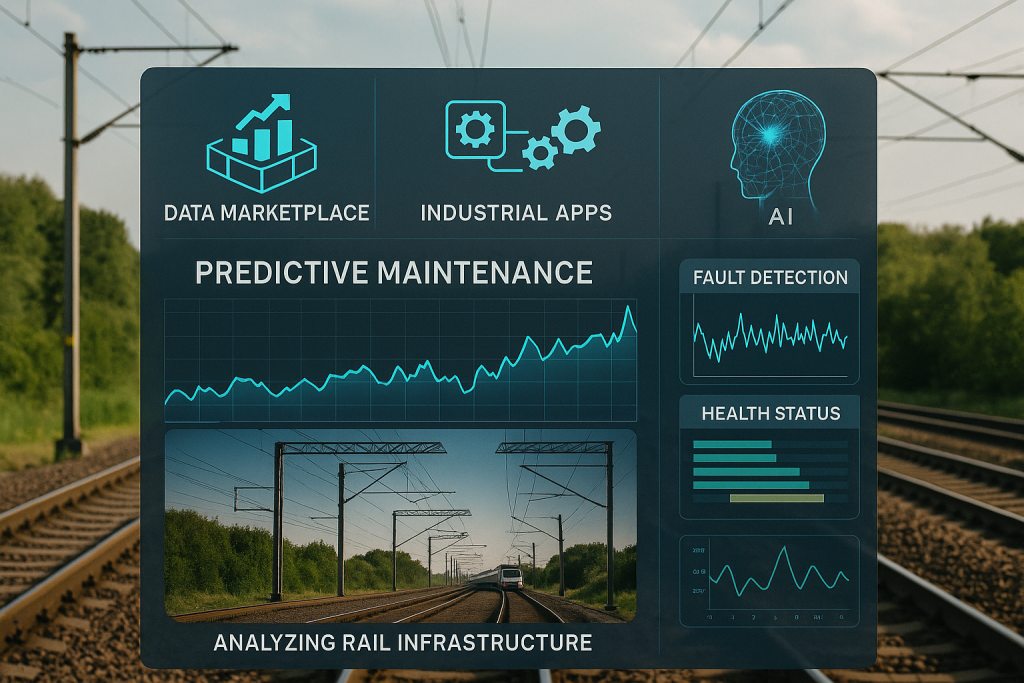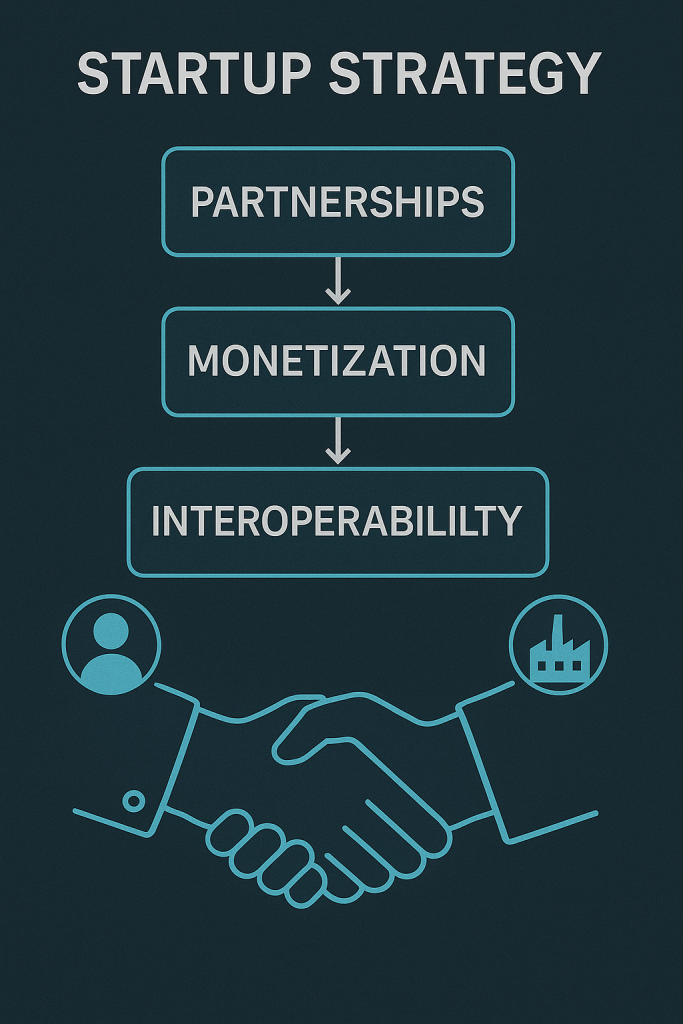Underutilized Industrial Data – Global and EU Perspectives
Mina Kolagar
Vast amounts of data generated by industry remain underutilized. Globally, studies find that the majority of collected data is never actually used. Gartner analysts estimate that nearly 97% of data within organizations sits unused (Unused data is a virtual goldmine | Digital Signage Today). In heavy industrial settings, the gap is even starker – for example, a McKinsey study noted that an oil rig with 30,000 sensors examined only 1% of the data it generated, leaving the rest unanalyzed (Unlocking the potential of the Internet of Things | McKinsey). Europe faces a similar challenge: roughly 80% of machine- and device-generated industrial data in the EU is never used (Europe’s new data law, explained – POLITICO). In other words, four-fifths of Europe’s industrial data potential is left on the table, a phenomenon often referred to as “dark data.” This underutilization represents a massive missed opportunity for efficiency gains, innovation, and economic growth, as data that could be transformed into valuable insights remains dormant.

Data Generation vs. Usage in the Rail Industry
The rail industry vividly illustrates this pattern of low data usage. Modern rail systems are increasingly instrumented – from sensors on locomotives and rolling stock (monitoring engine performance, vibration, temperature, etc.) to track-side devices and signaling systems generating continuous streams of information. A single smart train or railway line can produce terabytes of data on operations, asset condition, energy usage, and passenger flows. Yet, like other industrial sectors, only a fraction of this rail data is actively analyzed for decision-making. While precise statistics for rail are hard to come by, it is reasonable to infer a similar utilization gap (on the order of 80–90% unused) given the industry’s historically siloed data systems and lag in digitalization. In practice, this means valuable rail data remains locked away – data that could improve preventive maintenance, optimize scheduling, enhance safety monitoring, or inform better customer service. By analogy, if an oil platform taps just 1% of its sensor readings (Unlocking the potential of the Internet of Things | McKinsey), one can imagine that rail operators may likewise be overlooking troves of information from their equipment and operations. This status quo implies that a huge reservoir of efficiency and innovation in rail remains untapped, waiting to be unlocked by more proactive data use.
The consequences of underusing rail data are significant. Important indicators (e.g. subtle track defects, suboptimal driving patterns, or minor timetable deviations) may go unnoticed until they cause bigger problems. Inefficiencies accumulate when data isn’t leveraged – for instance, maintenance might be scheduled based on fixed intervals rather than real conditions, leading to either unnecessary servicing or, conversely, unforeseen breakdowns. In an era where data-driven optimization has transformed sectors like aviation and logistics, rail’s unused data represents a lost chance to boost reliability, capacity, and cost-effectiveness. Rail companies increasingly recognize this gap. As the International Union of Railways (UIC) and industry experts have observed, becoming more “data-driven” is now seen as critical for railways to improve performance in areas such as on-time running, asset utilization, and safety () (). The next sections will quantify the economic value locked in such underutilized data – and how new policies aim to change the game.

The Economic Value Locked in Unused Data
Underutilized data isn’t just a technical or operational issue – it carries a steep economic cost. Data that is collected but not used has value potential that remains unrealized, like gold sitting idle in a mine. Policymakers and researchers have attempted to size this “locked” value. The European Commission has pointed out that the slow pace of data usage is “holding back [data’s] huge potential for growth and innovation.” (Europe’s new data law, explained – POLITICO). By their estimates, simply making better use of industrial data could create an extra €270 billion in GDP by 2028 in the EU (European data strategy – European Commission). This figure represents the additional economic output expected if legal, technical, and economic barriers to data sharing/usage are addressed – a strong indicator of how much value is currently trapped in unused datasets. In fact, the EU’s overall data economy (the market for data and data-driven products and services) was valued around €301 billion in 2018 and is projected to reach roughly €829 billion by 2025 under ambitious growth scenarios (European data strategy – European Commission). A large portion of this growth depends on unlocking data across sectors.
In the rail sector, the economic stakes of unused data are also high. Consider the impact on efficiency: better data utilization can directly save time and money. For instance, one analysis found that providing real-time notifications of train delays (a data-driven service) could save European passengers and companies 27 million working hours annually, equivalent to about €740 million in labor costs (European data strategy – European Commission). This is a concrete example of value that data can unlock – in this case, by allowing people to reallocate time they’d otherwise spend waiting. On a larger scale, rail operators that harness data for predictive maintenance can avoid costly failures and service disruptions. Studies in adjacent industries show predictive maintenance can cut maintenance costs by double-digit percentages and reduce unplanned downtime significantly, translating to substantial financial savings. In rail, where infrastructure and rolling stock downtime has major economic ripple effects, the payoff from data-driven maintenance and diagnostics is enormous. Similarly, using data to optimize train scheduling and routing can improve network throughput (more trains on time with the same infrastructure), potentially increasing revenue for operators and better service for customers. All these improvements – more efficient operations, fewer breakdowns, energy savings, improved logistics – have an economic value that remains largely latent as long as data is not fully exploited. Unlocking that value could mean billions of euros in cost reduction and added output across Europe’s rail industry alone over the coming years.
EU Data Act: Unlocking Data for Value – with a Focus on SMEs and Startups
Recognizing the massive opportunity in wasted data, the EU has introduced the Data Act as a game-changer for the data economy. At its core, the Data Act is designed to “unlock” industrial data and share its benefits more broadly. It rests on the finding that today the “vast majority of data generated by connected devices and services is unused, or collected by a small number of large companies.” (The EU Data Act, an IoT and Cloud Sector Paradigm Shift, Becomes Reality – Gibson Dunn) In other words, a few dominant firms (often device manufacturers or platform providers) hoard much of the machine data, and most of that data never gets used to its full potential. The Data Act directly targets this imbalance. It establishes new rules so that users of connected products (from smart appliances to industrial machines) have the right to access the data they generate and share it with third parties of their choice (The EU Data Act, an IoT and Cloud Sector Paradigm Shift, Becomes Reality – Gibson Dunn). For example, if an operator owns a smart locomotive or a piece of rail equipment, they can request the telemetry data from the manufacturer and pass it to an analytics firm to derive insights – a scenario that historically might have been blocked by proprietary data silos. By opening up these channels, the EU aims to create a more competitive and dynamic market for data-driven services.
A key aspect of the Data Act is ensuring that SMEs and startups can partake in the data economy on fair terms. The regulation explicitly seeks to “ensure fairness in the allocation of the value of data among actors in the data economy.” (Data Act explained | Shaping Europe’s digital future) This includes protecting smaller firms from unfair contractual arrangements that larger players might try to impose. In fact, the Act has provisions to nullify contract terms that excessively restrict data use or sharing when they are imposed by a party with significantly stronger bargaining power (Data Act explained | Shaping Europe’s digital future). For instance, a startup providing a rail predictive maintenance platform should not be forced into a take-it-or-leave-it agreement by a big train manufacturer that limits access to the train’s sensor data – the Act would help invalidate such one-sided terms (Data Act explained | Shaping Europe’s digital future). By leveling the playing field, the Data Act empowers SMEs to negotiate access to data that was previously beyond reach.
The economic potential unlocked for SMEs and startups through improved data access is considerable. Europe’s data economy is often described in terms of big numbers – for example, roughly €270 billion in additional GDP could be generated by 2028 via better data use (European data strategy – European Commission). The question is: how much of this pie will smaller firms capture? Today, much of the data economy’s value is in the hands of large tech companies and industrial incumbents. But with the Data Act spurring a more open ecosystem, a significant portion of new value can shift to agile SMEs. Even if, say, only 20–30% of that €270 billion potential were seized by smaller firms in the form of new services and businesses, that would represent tens of billions of euros in revenue opportunities for SMEs. In practice, we are likely to see smaller players capturing a growing share of data-driven value because they excel at innovation. Many new services and niche solutions that large firms overlook can be created by startups when they have access to data. Indeed, in a recent McKinsey survey, 36% of senior executives worldwide said they expect to create new data, analytics or AI-driven products in the near future (Building a successful data business – lessons from McKinsey) – a clear sign that companies (large and small alike) plan to launch data-fueled offerings. SMEs and startups, with their agility and creativity, are well-positioned to develop many of these new offerings, especially now that the raw material (data) will be more readily available to them. By lowering entry barriers, the Data Act could channel a healthy slice of Europe’s €270 billion+ data opportunity towards smaller firms – whether that’s 10%, 20%, or more, the result would be a significant boost to SME growth in the digital economy.
Crucially, the Data Act not only unlocks data access for SMEs, but also instills trust in data sharing. Companies that were previously reluctant to share data with third-party startups (for fear of losing competitive edge or due to unclear legal frameworks) will now be nudged to do so under clear rules of the game. The Act mandates interoperability and standardization measures for data formats and interfaces (Data Act explained | Shaping Europe’s digital future), which lowers technical hurdles for startups trying to integrate with big industry players. It also includes measures to ensure cloud portability and prevent vendor lock-in, further opening the landscape for smaller cloud and data service providers to compete. All these changes mean that SMEs and startups in Europe should find it easier to both obtain and provide industrial data-driven services, enabling them to realistically capture a much larger portion of the data economy than they do today. In summary, the Data Act is poised to shift Europe’s data paradigm from one of untapped potential to one of shared wealth, with innovators of all sizes – not just tech giants – able to reap the benefits.
New Business Models and Innovation Opportunities Enabled by Data Sharing
With greater data access and sharing, a wave of new business models and innovations can be activated across industries. When previously siloed data streams are opened up, entrepreneurs and developers can combine and analyze them in novel ways, leading to services that were not possible before. Data-driven services are a prime area of growth. For example, companies can provide Predictive Maintenance-as-a-Service to industrial clients: using real-time sensor data from machinery (or trains, in the rail context) to predict failures and schedule maintenance only when needed. This model can drastically reduce downtime and maintenance costs for customers, creating value that a provider can charge for. In the rail sector, a startup could analyze vibration and current data from train pantographs and overhead lines (if made available by operators) to predict when a component is wearing out – offering rail operators a subscription service that minimizes costly disruptions. Such predictive analytics services become feasible at scale only when the startups can get the raw data from trains and tracks, which the Data Act will help facilitate.

Another emerging model is Data Marketplaces or Exchanges, where companies trade data or insights under controlled conditions. Improved data-sharing laws give confidence for entities to share without fear. We may see, for instance, a marketplace for mobility data where rail companies, logistics firms, and smart city platforms securely exchange data (e.g. train schedules, freight telemetry, passenger flow data) to enable new multi-modal transport services. Aggregation and anonymization services could spring up, wherein a company gathers machine data from many SME manufacturers and sells aggregated benchmarks or optimization insights back to them – giving even small factories the power of big-data insights. Additionally, “X-as-a-Service” models will expand. Manufacturers can offer equipment usage on a pay-per-use basis because IoT data will allow precise tracking of usage and performance. In transportation, this could mean Infrastructure-as-a-Service or Rail-as-a-Service offerings driven by shared data: e.g. on-demand train capacity or dynamic pricing based on real-time demand and network conditions, something that requires integration of data across operators.
Crucially, innovation thrives when data flows. By liberating data, the EU expects a surge in AI and analytics applications built on that data. Thierry Breton, the EU’s internal market commissioner, noted that underused industrial data is currently stifling innovation, and freeing it will unleash growth (Europe’s new data law, explained – POLITICO). We can anticipate new AI-driven solutions in sectors like rail: for example, AI systems that optimize train routing across different countries’ networks (possible only if data from all those networks is accessible), or machine-learning models that improve energy efficiency of trains by analyzing driver behavior and suggesting adjustments in real time. Startups might also build consumer-facing apps leveraging newly open industrial data – imagine travel apps that not only plan your journey across rail, road, and air, but also adjust dynamically if a train is delayed (using live data) and even compensate you or rearrange bookings automatically. None of these services would work without data sharing. With the Data Act, many such ideas become technically and legally viable.
Some concrete innovation opportunities for EU startups include:
- Multi-Source Data Integration: Combining data from multiple previously siloed sources to create a holistic service. In rail, this could mean integrating weather data, infrastructure sensor data, and train operational data to predict and mitigate weather-related disruptions – a service a startup could offer to infrastructure managers.
- Platform Ecosystems: Creating platforms where various stakeholders (e.g. in rail: operators, maintainers, suppliers, even passengers) come together and contribute data in exchange for insights. This can spawn network effects: the more data contributors, the more valuable the insights for all. The EU’s push for common European data spaces in domains like mobility will support such platform ecosystems (Data Act explained | Shaping Europe’s digital future).
- New Analytics Verticals: Data sharing can give rise to entirely new verticals – for instance, an environmental analytics startup could use industrial data (emissions sensors, energy usage logs from trains) to help companies reduce their carbon footprint and comply with green regulations. Without access to machines’ raw data, such carbon optimization services would be hard to deliver.
- AI and Machine Learning Products: With rich datasets available, startups can train AI models tailored to specific industrial problems. For railtech, one might develop an AI that uses years of train vibration data to detect subtle signs of track damage far earlier than human inspectors – offering it as a service to rail infrastructure companies. The data for this kind of model (historical vibration/signaling logs) is often locked within railway companies; if shared, it enables a whole new class of AI solutions.
In summary, the EU’s new data-sharing environment will catalyze innovation by providing the fuel (data) for creative new engines (business models). Many of these opportunities particularly benefit SMEs and startups who can move quickly to exploit niche use-cases. By some accounts, “every business is now a data business,” and monetizing data through new products can create completely new revenue streams (Building a successful data business – lessons from McKinsey). The Data Act helps ensure that even small businesses can be data businesses – by granting them the raw material they need to innovate. The stage is set for a renaissance of data-driven innovation, from industrial IoT services to AI-powered platforms, with startups playing a leading role in this transformation.
Strategies for EU Startups in the New Data-Sharing Ecosystem

With great opportunity on the horizon, EU startups – especially in infrastructure and railtech sectors like PANTOhealth – should adopt clear strategies to adapt and thrive in the data-sharing ecosystem created by the Data Act. Below are key strategies and considerations for startups to make the most of this new landscape:
- Forge Data Partnerships: Small firms should proactively partner with data holders (e.g. equipment manufacturers, rail operators, infrastructure managers) to access valuable datasets and co-develop services. Under the Data Act, large OEMs and industrial companies can no longer simply lock others out of their data; this creates an opening for startups to approach them (or their end-users) with partnership proposals. For example, a railtech startup could collaborate with a national rail operator to analyze rolling stock sensor data in exchange for delivering performance insights. Building trust is essential – startups need to demonstrate strong data handling practices and domain expertise so that bigger players see them as valuable allies. The good news is that rail companies don’t have to go it alone in analytics; they can “leverage support from a robust ecosystem including technology providers, the academic community, and OEM partners to realize AI’s potential.” () Startups should position themselves as that support ecosystem – the nimble tech provider that can unlock insights from a partner’s data. These partnerships can be formalized through data-sharing agreements or by participating in industry consortia focused on data (for instance, joining a rail data space initiative or UIC working group). By collaborating rather than working in isolation, startups can gain both the data access and the industry credibility needed to succeed.
- Innovative Data Monetization Models: Gaining access to data is just the first step – the next is figuring out sustainable ways to monetize data-driven insights. Startups should think creatively about business models that generate revenue from analytics and data services. One approach is offering subscription-based platforms: e.g. a maintenance analytics dashboard for rail operators, sold as a monthly/annual subscription per asset or per station. Another approach is value-based pricing or outcome-based contracts, where the startup’s fee is linked to the savings or improvements achieved (for instance, sharing in the cost savings if the startup’s solution reduces train delays or energy usage by a certain percentage). Data-as-a-service or API business models can also work: a startup could aggregate live transport data and provide API access for a fee to app developers, logistics companies, or municipalities. In exploring these models, it’s worth noting that monetizing data requires more than just having the data – it demands a solid strategy and product-market fit. As McKinsey points out, launching successful data products means understanding customer needs and building the right supporting capabilities, not simply “offering data to the world” and expecting it to sell (Building a successful data business – lessons from McKinsey). Startups should pilot different models to see what delivers clear value to customers. For example, PANTOhealth might start by providing a free basic analytics report to rail clients using their data, then upsell a premium continuous monitoring service. Over time, as the value is proven, clients will be willing to pay. In all cases, the focus should be on turning data into actionable insights that customers are willing to pay for – whether through dashboards, alerts, benchmarks, or integrations into their workflows.
- Platform Design for Interoperability and User Control: Design your technology platform with openness and compliance in mind. The Data Act emphasizes interoperability – data should flow between services and across platforms smoothly (Data Act explained | Shaping Europe’s digital future). For a startup, this means using open standards and APIs so that it’s easy to ingest data from various sources and also easy for customers to extract their data if they want. In practical terms, a railtech platform should support common data formats used in rail and industry (for example, supporting standard protocols for train telemetry or maintenance logs) to reduce friction when onboarding new data sources. It’s wise to align with emerging Common European Data Spaces specifications in your sector (the EU is developing data space standards for transport, manufacturing, etc., to facilitate exactly such interoperability (Data Act explained | Shaping Europe’s digital future)). Additionally, ensure your platform respects the user’s control over data, as mandated by the Data Act. For instance, if your startup is receiving machine data through a customer who is the equipment user, build in mechanisms for that user to easily grant, manage, or revoke consent for data sharing with you. Transparent permission dashboards, audit logs, and clear data usage terms in your UI/UX will not only keep you compliant but also build trust with clients. Essentially, make it easy for businesses to share data with you and see value, while feeling secure. By baking interoperability and user-centric design into your products from the start, you both comply with regulatory expectations and make your service more attractive in a connected ecosystem. In a scenario where a client might later switch providers or integrate your service with others, your adherence to standards will be a selling point (e.g. “no vendor lock-in, we integrate with your existing systems and you can export your data anytime”). This approach aligns with the spirit of the Data Act – fair and flexible use of data across platforms.
- Prioritize Data Governance and Trust: In a data-sharing world, trust is currency. Startups must therefore invest in robust data governance, privacy, and security practices. This includes implementing strong cybersecurity measures (to protect sensitive industrial data from breaches), clear data governance policies (defining how data is stored, processed, and who can access it), and compliance with data protection laws (like GDPR for any personal data). Rail and infrastructure data, while mostly operational, can be sensitive (e.g. security-critical information about networks), so demonstrating top-notch security is a must when working with incumbents. The importance of this is echoed by industry leaders: successful AI and data deployments in rail require “prioritize strong data governance and robust cyber security” from the outset (). Startups should consider obtaining relevant certifications (for example, ISO 27001 for information security) to provide assurance of their practices. They should also be transparent about data usage – clearly communicate to data-providing partners what data is collected, for what purpose, and ensure it’s only used in agreed ways. Building a reputation as a trustworthy data steward will distinguish a startup in the eyes of larger companies that are understandably cautious about sharing data. Additionally, startups should use the safeguards of the Data Act as a selling point – for instance, contracts can reference the Act’s provisions to reassure a client that the startup will not misuse data and that unfair terms are off the table by law. By diligently managing data ethics and security, startups create a virtuous cycle: more trust leads to more data sharing, which leads to better solutions and outcomes, which in turn reinforces trust.
- Leverage European Data Ecosystems and Support Initiatives: Finally, EU startups should actively engage with the broader data ecosystem and take advantage of support programs arising alongside the Data Act. The EU and member states are launching data innovation hubs, sandboxes, and funding programs to encourage use of industrial data. For example, the upcoming European common data spaces (in sectors like mobility, energy, manufacturing) will provide frameworks and sometimes infrastructure for data sharing – a railtech startup should stay tuned to the development of the European Mobility Data Space and seek to participate or align with it. Doing so can offer access to a larger pool of data and potential customers. Industry associations (like UIC in rail or sector-specific alliances) are also forming data collaborations – joining these can help startups shape standards and gain visibility. Moreover, the EU often provides R&D grants or competitions (such as Horizon Europe programs focusing on digital innovation, or challenges to use open data for new solutions). Startups should capitalize on these opportunities not just for funding, but to showcase their capabilities and form partnerships. In essence, don’t go it alone: by connecting with Europe’s wider push for a data-driven economy, startups can amplify their resources and influence. Networking with policymakers and attending data-focused events can also give insight into upcoming regulations or standards, ensuring the startup stays ahead of the curve. All of this ecosystem engagement complements the core strategy of the startup building a great product – it ensures the product is developed in the right context, solving real problems with the support of the community and the blessings of regulators.
By implementing these strategies, EU startups in infrastructure and railtech can position themselves at the forefront of the new data economy. The EU Data Act removes many of the old roadblocks that limited data access, but it’s up to the startups to drive through the open gate with compelling solutions. Those that do can unlock not only the latent value in data (turning idle information into actionable intelligence) but also new revenue streams and competitive advantages for themselves. In summary, greater data sharing can shift the industrial landscape in favor of those who adapt quickly – and with the right partnerships, business models, platform design, and trust-building, Europe’s SMEs and startups can realistically capture a robust share of the €270 billion+ opportunity ahead, all while delivering innovation that benefits the entire ecosystem (Europe’s new data law, explained – POLITICO) (European data strategy – European Commission).
Sources:
- European Commission – European Data Strategy & Data Act Press Materials (European data strategy – European Commission) (European data strategy – European Commission) (Data Act explained | Shaping Europe’s digital future) (Data Act explained | Shaping Europe’s digital future)
- Politico – “Europe’s new data law, explained” (Europe’s new data law, explained – POLITICO) (Europe’s new data law, explained – POLITICO)
- Deloitte Insights – “EU Data Act: What does it mean for you?” (The EU Data Act: What does it mean for you? | Deloitte Luxembourg | Technology) (The EU Data Act: What does it mean for you? | Deloitte Luxembourg | Technology)
- Gibson Dunn – “The EU Data Act… Paradigm Shift” (Client Alert) (The EU Data Act, an IoT and Cloud Sector Paradigm Shift, Becomes Reality – Gibson Dunn)
- McKinsey & Co. – Industry and data analytics reports (Unlocking the potential of the Internet of Things | McKinsey) (Unlocking value in dormant industrial manufacturing data | McKinsey) (Building a successful data business – lessons from McKinsey)
- “Digital Signage Today” (quoting Gartner) – “Unused data is a virtual goldmine” (Unused data is a virtual goldmine | Digital Signage Today)
- “UIC” ( the journey toward AI-enabled railway companies)
